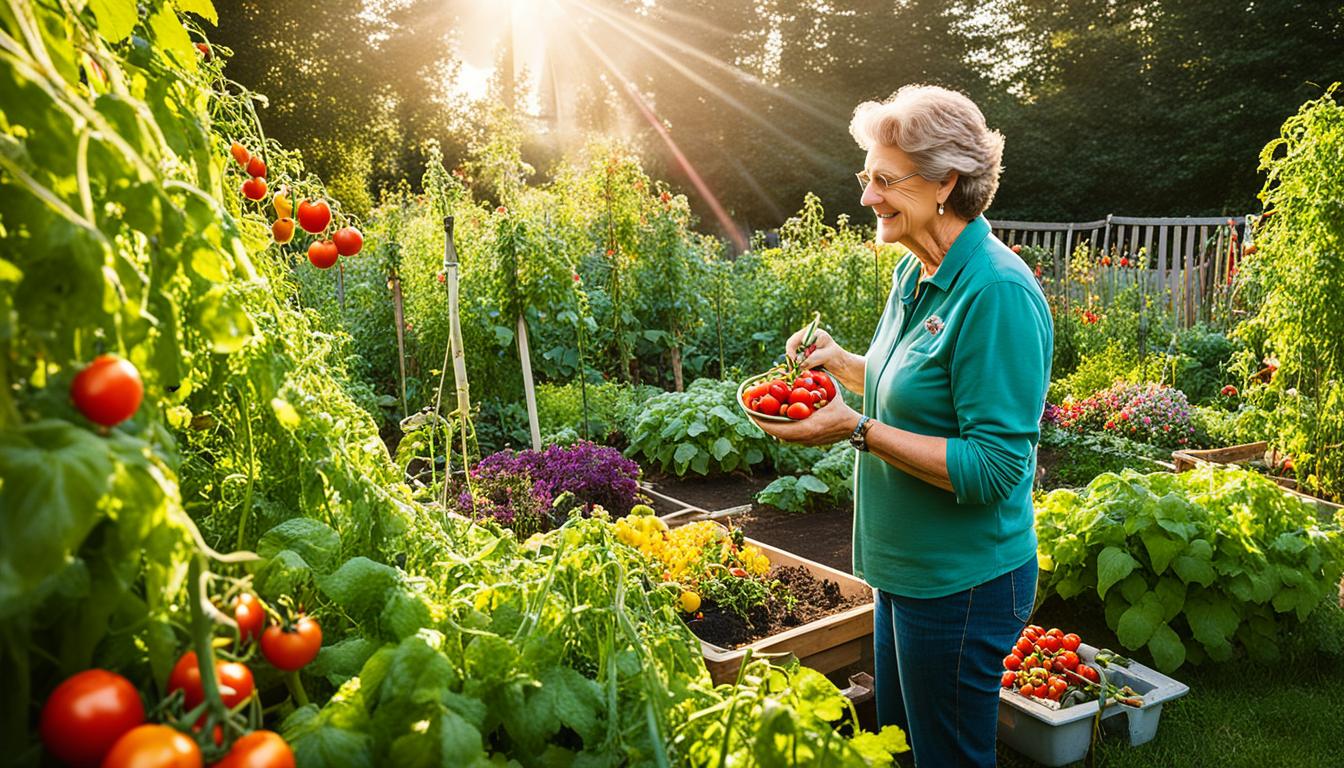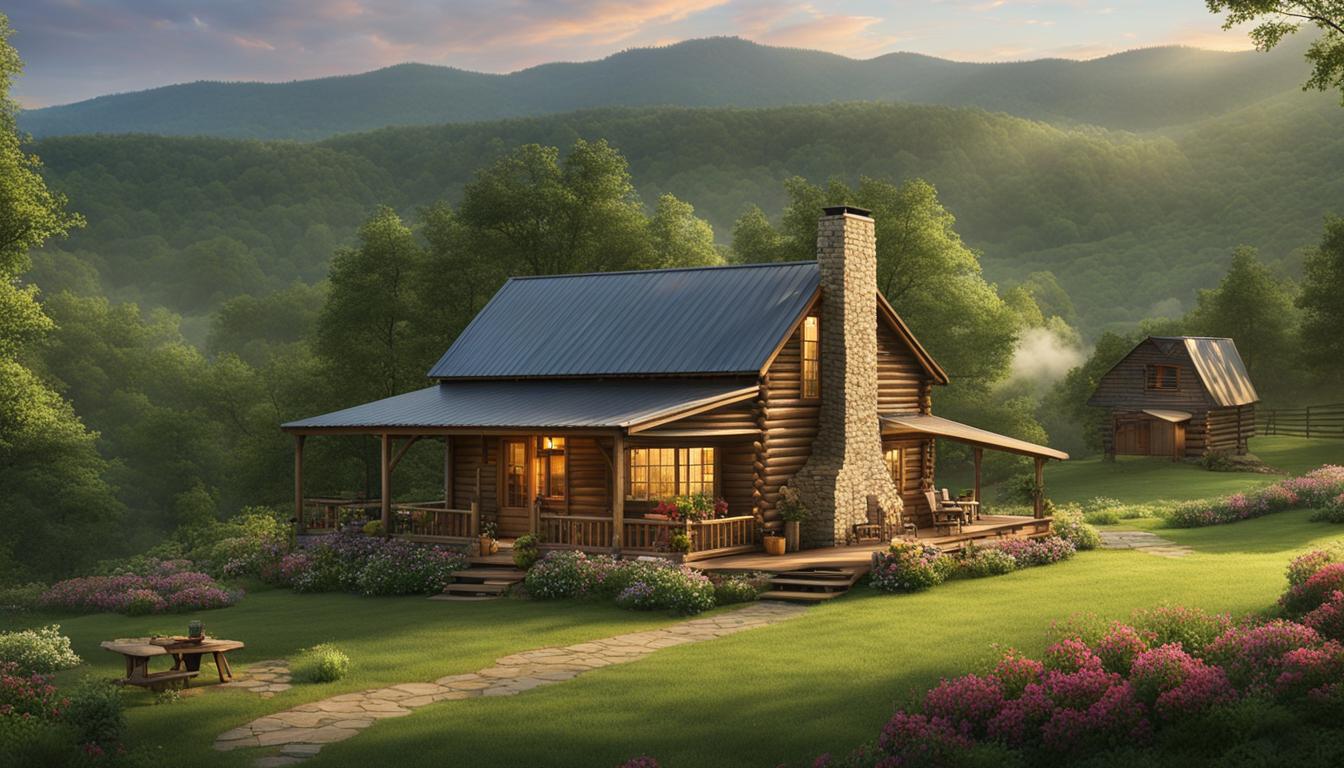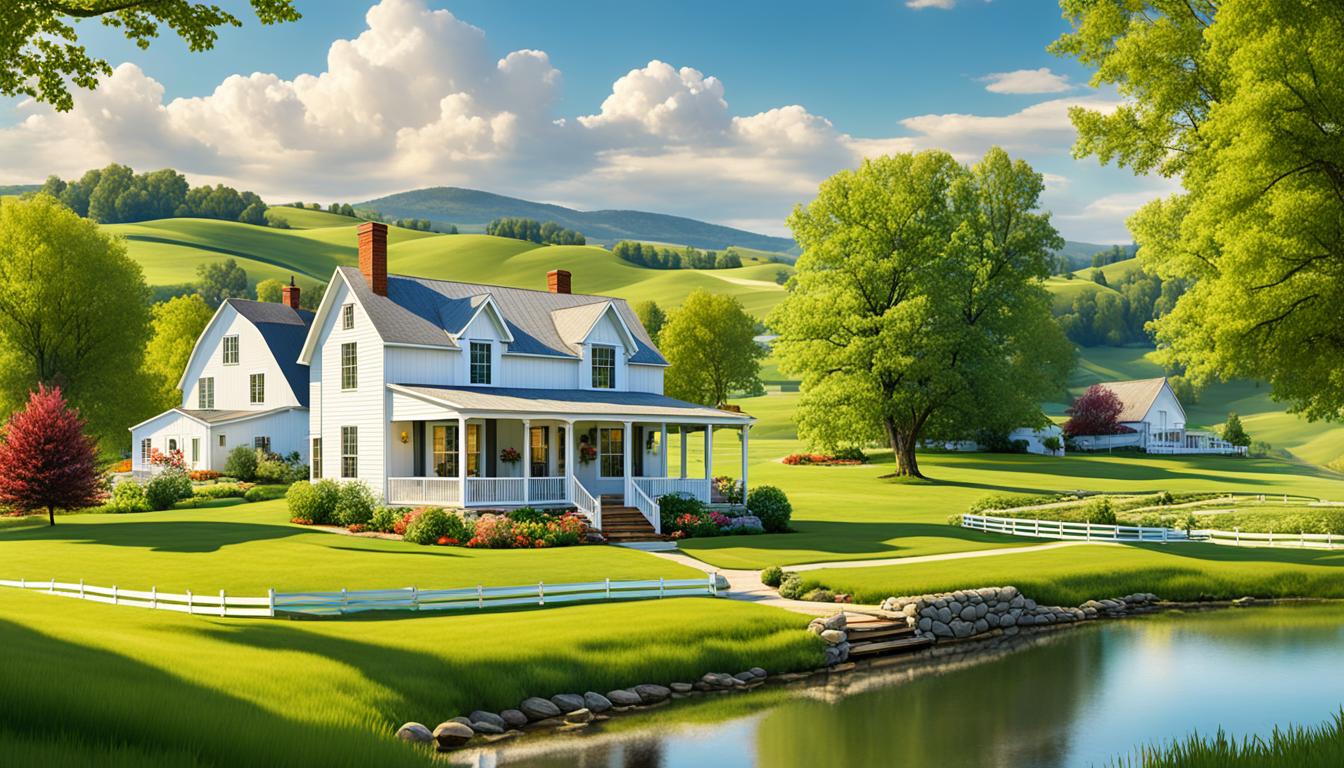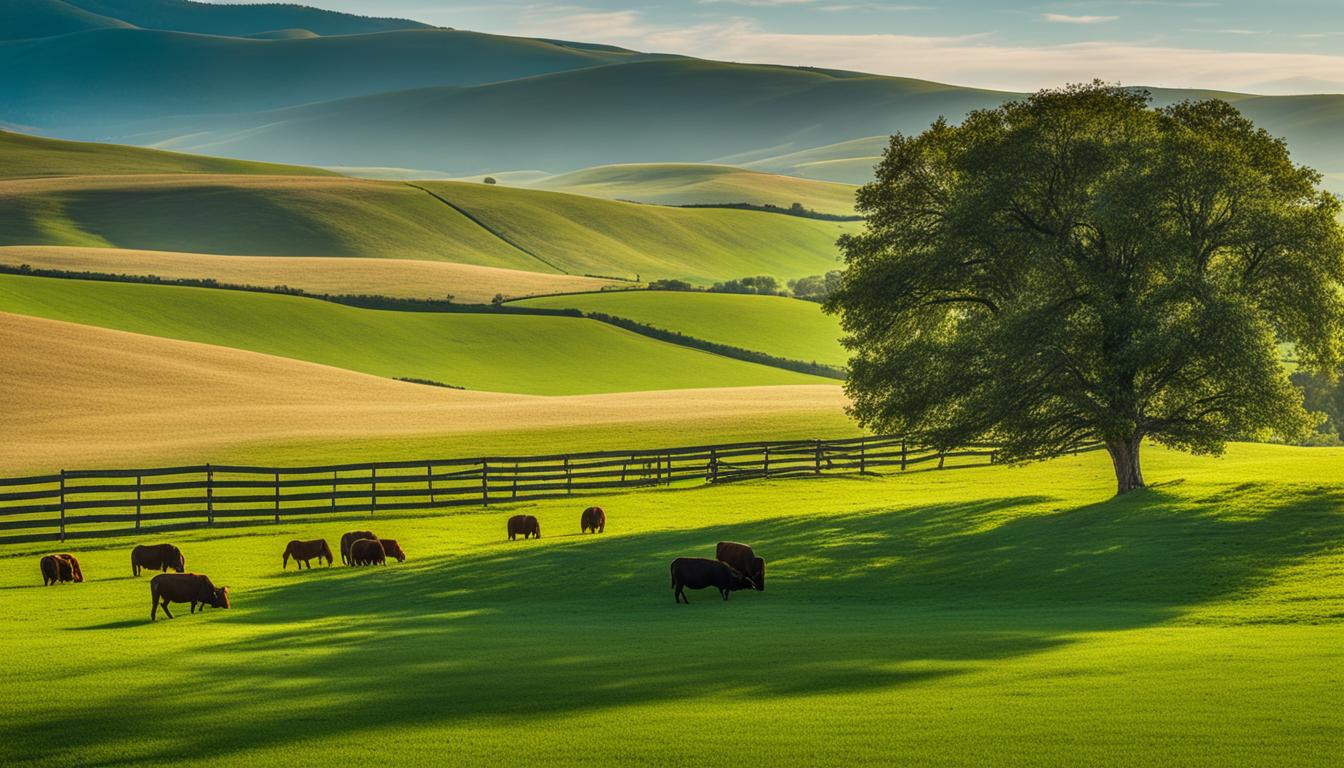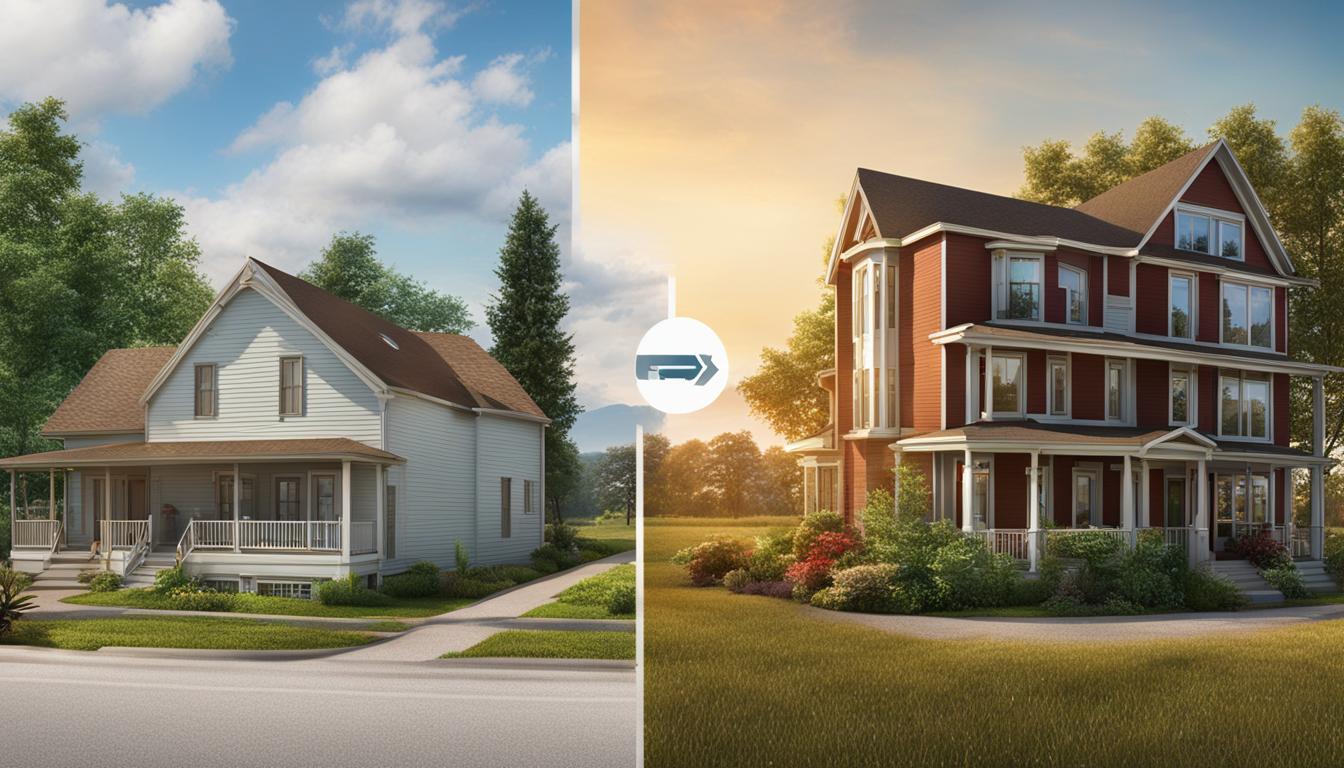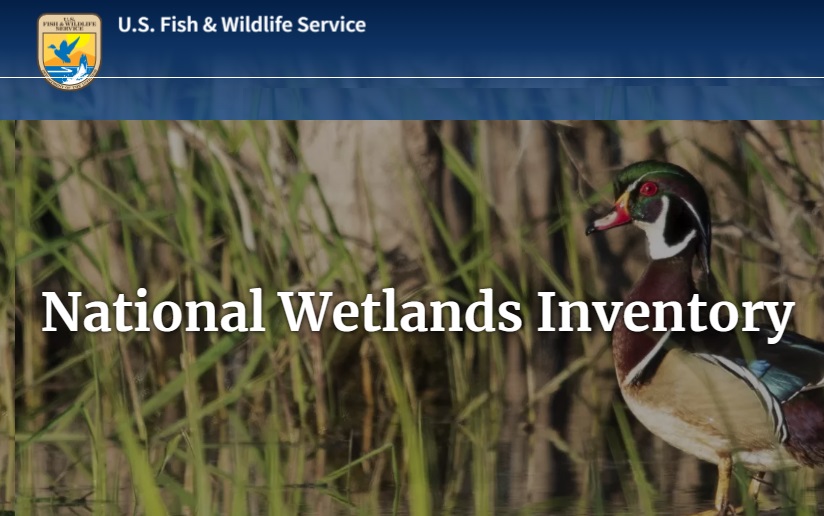Brad T.
March 28, 2024
Over the past decade, there has been a noticeable trend of Americans moving away from crowded cities and embracing the quiet, serene lifestyle of rural areas. In 2024 and beyond, this migration to rural living is expected to continue, driven by various factors such as the appeal of the rural lifestyle, the availability of opportunities in rural America, and the desire for a change of pace.
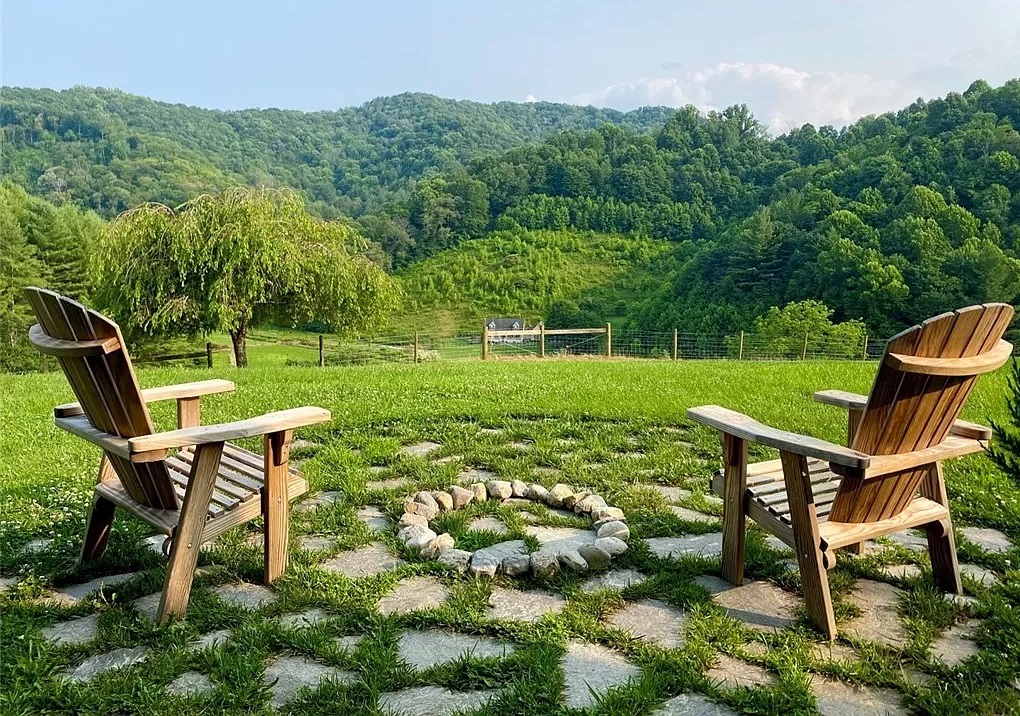
– More Americans are ditching their unsafe, congested city life in favor of something a little more peaceful and fulfilling
We won’t talk much about the developing, inner city problems that we discussed in this article, as most of those things are already well-known to anyone paying attention. Below, we will primarily just focus on the advantages and positives of rural areas.
The allure of rural living in the United States cannot be underestimated. The charm of open spaces, close-knit communities, and a stronger connection with nature has captivated the hearts of many Americans. As the pace of life becomes increasingly hectic, more people are seeking solace in the tranquil beauty of rural landscapes.
In addition to the appeal of the rural lifestyle, rural America offers a wealth of opportunities for individuals and families. Job prospects, business ventures, and a lower cost of living make rural areas an attractive option for those seeking a fresh start or a change of scenery. As technology breaks down the barriers between urban and rural areas, remote work and entrepreneurship become increasingly feasible, making rural living a viable choice for many.
The population shifts from urban areas to rural regions have also contributed to this growing trend. Rising living costs, overcrowding, and the desire for more space have prompted many to seek greener pastures in rural America. As a result, rural communities are experiencing an influx of new residents, bringing with them diverse perspectives, skills, and contributions.
Relocating to a rural area comes with a myriad of benefits. Lower crime rates, a strong sense of community, and access to a wide range of outdoor recreational activities are just a few of the advantages that rural living offers. The opportunity to live a simpler, more fulfilling life away from the hustle and bustle of urban centers is a significant draw for those considering a move.
Looking ahead, the future of rural living in the United States appears promising. As more Americans recognize the appeal of rural areas and the opportunities they present, we can expect to see continued growth in migration to rural regions. The development of infrastructure, technology, and support systems will further enhance the attractiveness of rural America, making it an increasingly viable option for individuals and families seeking a new beginning.
Key Takeaways:
- Rural living in the U.S. is experiencing a surge in popularity, with more Americans choosing the peaceful, opportunity-rich lifestyle it offers.
- The appeal of rural life lies in the charm of open spaces, close-knit communities, and a stronger connection with nature.
- Rural America provides a wealth of opportunities, including job prospects, business ventures, and a lower cost of living.
- Population shifts from urban to rural areas have contributed to the growth of rural living, driven by rising living costs, overcrowding, and the desire for more space.
- The benefits of rural relocation include lower crime rates, a strong sense of community, and access to outdoor recreational activities.
Changing Perspectives on Rural Living
Over the years, perspectives on rural living in the U.S. have undergone a significant transformation. With changing attitudes and priorities, more and more individuals are discovering the appeal of a rural lifestyle. The desire for a slower pace of life and the opportunity to live closer to nature are driving this migration trend from suburban to rural areas.
One of the key factors behind this shift is the growing recognition of the benefits of rural living. Many people are realizing that rural communities offer a unique charm and a sense of belonging that may be lacking in urban or suburban environments. The peace and tranquility of rural areas, coupled with the opportunity for a more sustainable way of life, have become increasingly appealing.
“Living in a rural community allows me to experience a sense of connection with nature that I was missing in the suburbs. The open spaces, fresh air, and natural beauty are priceless.”
Rural living also provides individuals with the chance to escape the fast-paced, high-stress lifestyle often associated with urban areas. Many people are drawn to the idea of living in a close-knit community where neighbors know each other and support one another. The strong sense of community and the opportunity for meaningful relationships are important factors driving the suburban to rural migration trend.
In addition to the desire for a slower pace of life and a stronger sense of community, the migration from suburban to rural areas is fueled by the attractive opportunities that rural America has to offer. The availability of land, lower living costs, and entrepreneurial prospects have become increasingly appealing to individuals and families seeking a fresh start.
Rural Lifestyle Appeal and Migration Trends
The rural lifestyle appeals to those who value a simpler way of life and have a deep appreciation for nature. It offers opportunities for outdoor activities such as hiking, fishing, and gardening. Living in a rural area allows individuals to disconnect from the noise and distractions of modern life, and reconnect with their surroundings.
Statistics reveal that migration from suburban to rural areas has been on the rise in recent years. According to a study conducted by the U.S. Census Bureau, between 2010 and 2020, rural population growth surpassed urban population growth in several states. This trend indicates a shifting preference towards rural living, highlighting the appeal of the rural lifestyle.
“Moving from the suburbs to a rural area has been a transformative experience for me and my family. We’re able to live a more self-sufficient lifestyle, surrounded by nature, and with the space to pursue our passions.”
As migration trends continue to favor rural living, it’s clear that perspectives on rural areas have changed significantly. The rural lifestyle offers a unique combination of natural beauty, a tight-knit community, and appealing opportunities that are attracting individuals and families from suburban areas. The migration from suburbia to rural America is not just a trend; it represents a shift in priorities and values, as more people recognize the benefits of embracing a rural lifestyle.
The Allure of Opportunities in Rural America
One of the key factors driving the increasing number of Americans moving to rural areas is the appealing range of opportunities that these regions offer. Rural America provides a unique combination of job prospects, business opportunities, and lower costs of living that make it an attractive option for individuals and families seeking a fresh start.
First and foremost, rural areas present a plethora of job opportunities across various sectors. From agriculture and farming to renewable energy, rural America offers a diverse range of employment possibilities. The growing focus on sustainable living and locally sourced products has fueled the demand for skilled workers in these fields. Moreover, with the rise of remote work and online businesses, individuals can leverage the advantages of rural living while still pursuing their careers or entrepreneurial ambitions.
Additionally, rural regions provide a conducive environment for those looking to start their own businesses. The lower costs of living, including affordable real estate and lower overhead expenses, make it easier for aspiring entrepreneurs to establish their ventures. The close-knit communities in rural areas often foster a supportive network, encouraging collaboration and shared success.
The lower costs of living in rural America also play a significant role in attracting individuals and families. Compared to urban or suburban areas, housing, transportation, and everyday expenses are generally more affordable in rural regions. This affordability allows residents to enjoy a higher quality of life, with more disposable income and the ability to invest in their future.
“Rural America provides a unique combination of job prospects, business opportunities, and lower costs of living that make it an attractive option for individuals and families seeking a fresh start.”
Furthermore, the serene and peaceful lifestyle inherent to rural areas holds immense appeal for those seeking a change from the fast-paced city environment. The opportunity to live closer to nature, with access to natural resources and outdoor recreational activities, is highly desirable for many individuals and families in today’s world. Rural living allows for a slower pace of life, fostering a sense of tranquility and a stronger connection to the environment.
Rural America is experiencing a surge in migration as more individuals recognize the numerous opportunities available in these regions. The allure of job prospects, business opportunities, lower costs of living, and the chance to embrace a peaceful, nature-centric lifestyle are driving the suburban to rural migration trend.
| Opportunities in Rural America | Rural Lifestyle Appeal | Suburban to Rural Migration |
|---|---|---|
| Rural job prospects Entrepreneurial opportunities |
Serenity and closer connection to nature Access to outdoor activities |
Increasing number of Americans moving to rural areas |
| Lower cost of living Affordable real estate |
Slower pace of life Stronger community ties |
Rural areas as an attractive option for a fresh start |
The Benefits of Rural Relocation
Relocating to rural areas offers numerous advantages that appeal to individuals and families seeking a change in their living environment. The migration trends from suburban to rural areas reflect the desire for a more fulfilling and peaceful lifestyle. Let’s explore the benefits that come with rural living:
1. Lower Crime Rates
Rural areas often boast significantly lower crime rates compared to urban or suburban regions. This creates a safer and more secure environment for residents, allowing them to enjoy a greater sense of peace and tranquility.
2. Close-Knit Communities
Rural communities are known for their strong sense of camaraderie and neighborly support. With fewer people and a slower pace of life, individuals can forge deep connections with their neighbors, fostering a sense of belonging and community engagement.
3. Access to Outdoor Recreational Activities
The picturesque landscapes and natural beauty of rural areas provide ample opportunities for outdoor recreational activities. From hiking and biking trails to fishing and camping spots, rural living offers a chance to embrace an active and nature-filled lifestyle.
4. Improved Quality of Life
Rural living often translates to a higher quality of life. With cleaner air, less noise pollution, and reduced traffic congestion, individuals can enjoy a healthier and more serene living environment. Additionally, the slower pace allows for more time to focus on personal interests and hobbies, contributing to overall well-being.
| Benefit | Description |
|---|---|
| Lower Crime Rates | Relocating to rural areas offers a safer and more secure environment due to lower crime rates. |
| Close-Knit Communities | Rural areas are known for their strong sense of community and neighborly support. |
| Access to Outdoor Recreational Activities | Rural living provides ample opportunities for outdoor activities such as hiking, fishing, and camping. |
| Improved Quality of Life | Rural areas offer a healthier and more serene living environment, contributing to a higher quality of life. |
These are just a few of the many benefits that come with relocating to rural areas. As more individuals and families recognize the advantages of rural living, the migration trends from suburban to rural areas are expected to continue.

Population Shifts: Urban Exodus to Rural Regions
The 21st century has witnessed significant population shifts, with an increasing number of Americans choosing to leave urban areas in favor of rural regions. This phenomenon, often referred to as the urban exodus, is driven by various factors that make rural living more appealing than ever before. From the rising living costs and overcrowding in urban centers to the desire for a more spacious and fulfilling lifestyle, the allure of rural living has become increasingly attractive to individuals and families alike.
One of the primary drivers of this population shift is the skyrocketing living costs in urban areas. Big cities are notorious for their high housing prices, steep rents, and exorbitant expenses. As a result, many individuals and families find it financially challenging to sustain a comfortable life in urban centers. The option of moving to rural regions, where the cost of living is significantly lower, provides a compelling alternative that allows for a greater sense of financial security and stability.
Additionally, overcrowding in urban areas has spurred a desire for more space and a slower pace of life. The hustle and bustle of city living, characterized by traffic congestion, long commutes, and crowded public spaces, can be overwhelming and draining. In contrast, rural regions offer a peaceful and tranquil environment, with open spaces, scenic landscapes, and a sense of closeness to nature. This appeal of a more serene and relaxed lifestyle has prompted many individuals to leave the chaos of urban centers behind and seek solace in the beauty of rural America.
The urban exodus has not only affected the individuals and families who make the move, but it has also had a significant impact on the rural communities they choose to settle in. With an influx of new residents, these communities experience growth and revitalization, as well as the infusion of diverse perspectives and talents. This migration brings opportunities for economic development, job creation, and the enrichment of local culture.
The image below captures the essence of this population shift, showcasing the contrast between a bustling urban cityscape and a serene rural landscape.
The Impact of Urban Exodus on Rural Communities
The influx of individuals and families from urban areas to rural regions has breathed new life into rural communities. With their arrival, these migrants bring not only their skills and talents but also a fresh perspective that can invigorate and diversify the local economy. The infusion of new businesses and industries, as well as increased job opportunities, can have a transformative effect on the region’s prosperity.
Moreover, the urban exodus contributes to the preservation of rural values and traditions. As more people embrace the rural lifestyle, there is a resurgence of interest in agricultural practices, sustainable living, and community-driven initiatives. This revitalization of rural culture fosters a stronger sense of identity, unity, and pride among the residents, creating a close-knit community that supports and uplifts one another.
“The migration from urban areas to rural regions reflects a fundamental shift in people’s values and priorities. It highlights the longing for a simpler, more fulfilling life and a deep connection with nature. Rural America offers the perfect setting to realize these dreams.” – [Name]
In conclusion, the urban exodus to rural regions is a compelling phenomenon that signifies a change in perspectives and priorities among Americans. The desire for a more affordable, spacious, and fulfilling lifestyle, coupled with the impact of rising living costs and overcrowding in urban areas, has led to a significant population shift. As individuals and families migrate from suburban to rural areas, they bring new opportunities and vitality to the communities they join, contributing to the growth and sustainability of rural America.
The Appeal of Suburban to Rural Migration
In recent years, there has been a noticeable trend of more individuals and families opting for suburban to rural migration. The allure of rural areas as an alternative to suburban living has become increasingly enticing for many. This section will explore the reasons behind this migration trend and shed light on the appeal of rural living.
One of the primary factors driving suburban to rural migration is the desire for a simpler lifestyle. In the hustle and bustle of suburban areas, individuals often find themselves yearning for a slower pace, closer community connections, and a stronger sense of belonging. Rural areas offer exactly that, providing a peaceful environment that allows people to embrace a more relaxed way of life.
Another key aspect that attracts people to rural areas is the greater sense of community. In suburban neighborhoods, interactions with neighbors often remain at a superficial level, with limited opportunities for meaningful connections. However, rural communities are known for their tight-knit bonds and neighborly support. People value the warmth and familiarity that comes with living in a place where everyone knows your name.
The lower costs of living associated with rural areas also play a significant role in the appeal of suburban to rural migration. In urban and suburban regions, the high cost of housing, transportation, and everyday expenses can be burdensome. Rural areas offer a more affordable alternative, allowing individuals and families to stretch their budgets further and enjoy a higher quality of life.
Embracing a rural lifestyle offers a myriad of benefits, from more spacious and serene surroundings to a stronger sense of community spirit. As migration trends continue to shift towards rural areas, it is evident that the appeal of suburban to rural migration remains strong.
Embracing the Rural Lifestyle
The rural lifestyle holds a captivating appeal for many Americans who are seeking a change from urban or suburban living. The allure lies in the abundance of open spaces, diverse agricultural opportunities, a chance for self-sustainability, and the opportunity to connect with nature on a deeper level.
The vast expanses of land in rural areas offer a respite from the hustle and bustle of city life. Individuals are drawn to the serene and peaceful environments that allow for a slower pace of living, fostering a sense of tranquility and relaxation. The abundance of greenery and natural landscapes provides an ideal backdrop for fostering a healthy and balanced lifestyle.
One of the significant appeals of the rural lifestyle is the opportunity to participate in various agricultural endeavors. Whether it’s starting a small-scale farm or cultivating gardens, individuals can embrace the joys of farming and experience the satisfaction of growing one’s own food. This connection to the land and the ability to be self-sufficient resonates deeply with those seeking a more sustainable way of life.
Engaging in outdoor activities is another way individuals embrace the rural lifestyle. The vast open spaces offer ample opportunities for hiking, biking, fishing, and other recreational pursuits that promote a healthy, active lifestyle. Whether it’s exploring rugged trails or simply enjoying the fresh air, rural areas provide a haven for outdoor enthusiasts.
“Living in a rural area allows me to fully immerse myself in nature and experience a stronger connection to the environment. It’s refreshing to wake up to the sound of birds chirping and enjoy a peaceful evening surrounded by the beauty of the countryside.” – Sarah Johnson, rural lifestyle enthusiast
Furthermore, embracing the rural lifestyle often means actively participating in community events and fostering close-knit relationships. Rural communities offer a strong sense of camaraderie, where neighbors know each other by name and come together to support one another. One can participate in local festivals, farmer’s markets, and other community-driven events that celebrate the unique charm of rural America.
The Benefits of Embracing the Rural Lifestyle:
- Opportunity to enjoy open spaces and a slower pace of life
- Engagement in agricultural activities and self-sustainability
- Access to a wide range of outdoor recreational activities
- Fostering a sense of community and close-knit relationships
The rural lifestyle holds enormous potential for those who desire a change from urban or suburban living. From the appeal of open spaces and agricultural opportunities to the chance for self-sustainability and close connections with nature, rural areas provide a distinctive and fulfilling way of life.
Future Outlook: Predictions for Rural Living
In this section, we will explore the future of rural living in the United States and discuss the potential trends and developments that may shape these areas. With the evolving migration trends and population shifts, opportunities in rural America are expected to grow. Additionally, the role of technology will play a vital role in transforming the rural landscape.
Predicted Migration Trends
The migration trends suggest an increasing number of Americans opting for rural living. As people seek a change from the fast-paced urban lifestyle, rural areas offer a peaceful and serene environment. The migration towards rural living is driven by the desire for a simpler way of life, closer connection with nature, and overall well-being.
Potential Developments in Rural Areas
As more individuals and families move to rural areas, there are opportunities for development and growth. Local communities and governments will focus on enhancing infrastructure, healthcare facilities, and educational institutions to cater to the growing population. This will lead to increased job prospects and improved quality of life in rural areas.
| Opportunities in Rural America | Population Shifts | Technological Advancements |
|---|---|---|
| Career growth in agriculture, renewable energy, and sustainable living. | A shift from densely populated urban areas to rural regions. | Access to high-speed internet, digital services, and remote work opportunities. |
| Entrepreneurial opportunities in tourism, food production, and small businesses. | Increased diversity and cultural enrichment in rural communities. | Innovation in precision farming, smart infrastructure, and rural connectivity. |
| Affordable housing options and lower cost of living compared to urban areas. | Improved healthcare services and access to nature for overall well-being. | Integration of e-commerce and digital platforms for rural businesses. |
Challenges and Opportunities
The future of rural living presents both challenges and opportunities. While rural areas offer a sense of community, natural landscapes, and a chance to escape from the urban hustle, there may be challenges in maintaining infrastructure and services. However, with proper planning, investments, and collaboration, these challenges can be overcome, creating a vibrant and sustainable future for rural America.
Conclusion
In conclusion, the increasing number of Americans choosing to move to rural areas in 2024 and beyond is a result of the changing perspectives on rural living. The appeal of a peaceful and opportunity-rich lifestyle, coupled with population shifts and the desire for a simpler way of life, are the driving forces behind this trend.
Rural America offers a wide range of opportunities, including job prospects and business ventures, making it an attractive option for individuals and families seeking a fresh start. The lower costs of living and the sense of community in rural areas further contribute to the appeal of relocating.
As opportunities in rural America continue to grow, we can expect more individuals and families to embrace the rural lifestyle in the coming years. This shift not only provides a chance to escape the fast pace of urban living but also offers a chance to connect with nature and enjoy the benefits of close-knit communities.
FAQ
Why are more Americans choosing to move to rural areas in 2024 and beyond?
How have perspectives on rural living changed over time?
What are the opportunities available in rural America that are attracting more Americans to move?
What are the benefits of relocating to rural areas?
Why are there population shifts from urban areas to rural regions?
Why is there an appeal of suburban to rural migration?
What aspects of the rural lifestyle attract Americans?
What is the future outlook for rural living in the United States?
Recent Blogs
The Joys of Living In Rural Areas: Serene Bliss
Living in rural areas offers a unique and enchanting experience that is unparalleled. The serene bliss of countryside living provides a break from the hustle and bustle
Land Investment: Value Increase Over Time Explained
Welcome to our guide on investing in land and understanding the potential value increase over time. Land can be a lucrative investment opportunity, offering enticing returns and
Benefits of Home Gardening: Why It’s Vital
Welcome to our article on the benefits of home gardening. In today's fast-paced world, where convenience often takes precedence, the act of nurturing and growing plants in
Living in the Appalachians: Insights & Lifestyle
Welcome to the breathtaking region of the Appalachians, where the beauty of the mountains and the warmth of its communities create a unique and enriching living experience.
Why More Americans Choose Rural Life in 2024
Over the past decade, there has been a noticeable trend of Americans moving away from crowded cities and embracing the quiet, serene lifestyle of rural areas. In
Investing in Rural Land: Essential Tips
Are you considering investing in rural land? Whether you're looking for a peaceful getaway or an opportunity to diversify your investment portfolio, rural land can offer unique
Comparing Affordability: Rural Living vs. City Living
When it comes to choosing a place to live, affordability is often a top consideration. Rural areas can offer a less expensive lifestyle compared to bustling cities,
The Importance of Prepping and Survival Skills – Interviewing David
The Importance of Prepping and Survival Skills: Interviewing David Savage Ever wonder what you'd do in a crisis situation in which
How to Know if a Property is in a Flood Zone
How to Know if a Property Is in a Flood Zone Here, we'll share a really quick way that will allow you to know



